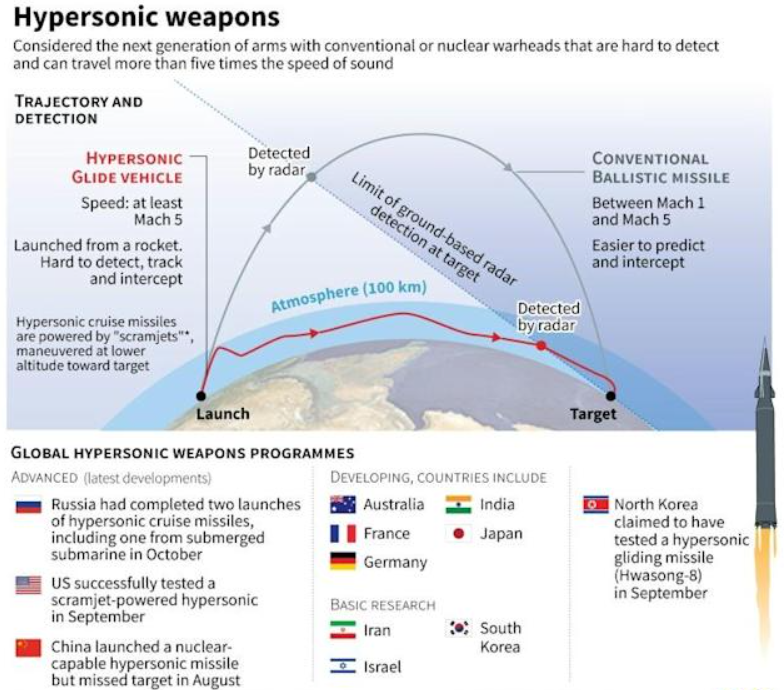Hypersonic missile system:
-
Hypersonic weapons are manoeuvrable weapons with a top speed of Mach 5, or five times the speed of sound.
-
The speed of sound is Mach 1, and speeds more than Mach 1 are supersonic, while speeds greater than Mach 5 are hypersonic.
-
Hypersonic weapons travel through the atmosphere and can manoeuvre midway, making detection and interception extremely challenging.
-
This means radars and air defences won’t be able to detect them until they’re very close to them, giving them very little time to react.
-
Types:
-
Hypersonic Cruise Missiles (HCM): It is a typical cruise missile which is all the way powered to achieve hypersonic speeds of Mach 5 or higher.
-
Hypersonic Glide Vehicles(HGV): The missiles have a boost-glide systems. They are launched like a traditional ballistic missile. But instead of following an arc high above the atmosphere ,the re-entry vehicle is put on a trajectory that allows it to enter Earth’s atmosphere quite quickly before gliding un-powered for hundreds or thousands of kilometres.
-
Importance of Hypersonic missiles:
-
Hypersonic weapons strikes at a tremendous speed and prohibits the defender to get his defences to react to such a threat in time.
-
They can fly lower than the traditional ballistic missiles, thus they tend to avoid radar detection. Hence, they are difficult to be detected by the US missile defence satellites and radars.
-
The payloads gliding at speeds in excess of Mach 5 and more are so manoeuvrable due to their non-ballistic trajectories that they can change their targets at any point.

Status of Hypersonic Weapons:
|
Russia
|
|
|
China
|
|
|
US
|
|
|
India
|
|